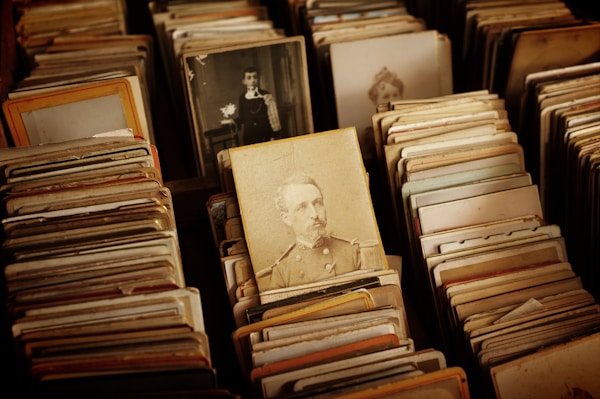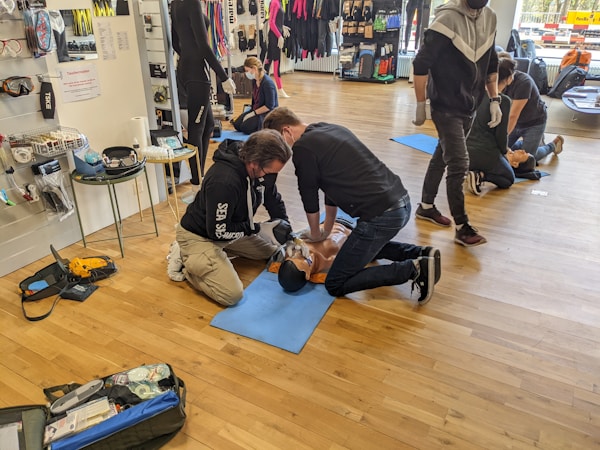The history of CPR and how it has saved lives is a long and inspiring one. From its humble beginnings as a way to revive drowning victims to its current status as a life-saving procedure, CPR has come a long way. Keep reading to learn more about CPR classes online, the history of CPR, and how it has saved countless lives.
CPR, or cardiopulmonary resuscitation, is a life-saving technique that is used to revive people who have stopped breathing or whose hearts have stopped beating. It has been around for centuries and has been used to save countless lives. The first recorded instance of it being used was in the 17th century. In 1667, a French doctor named Jean-Baptiste de la Salle used it to revive a man who had drowned. De la Salle is considered the father of it, and his techniques were later used to save many other lives.
CPR in the 18th century was a much different procedure than it is today. There were no CPR classes or guidelines to follow. Instead, the procedure was based on medical theory and guesswork. One of the most common methods for the technique was to use a human heart as a compressible object. The heart would be placed in the victim's chest and repeatedly compressed in an effort to restart the heart. Other methods included using bellows or even a bag of hot coals. There was no standard procedure. Instead, each doctor developed his or her own method. This led to a lot of variation in the outcomes. Some victims were successfully resuscitated, while others died after being subjected to brutal methods.
Despite this early record of success, CPR remained a relatively obscure emergency procedure until the early 1800s, when it began to be used more widely throughout Europe and North America. In 1817, an English doctor named William Harvey published a paper on the use of it in drowning victims, which helped to popularize the technique. In 1832, a French doctor named Jean-Nicolas Harel developed a method of performing chest compressions, which helped to further improve the effectiveness of the technique. Throughout the 1800s, it continued to be refined and improved, and it gradually began to be recognized as an effective way to save lives in emergency situations. In 1891, an American doctor named Peter Safar developed the first standardized protocol, which helped to make the procedure more reliable and consistent.
In the 1930s, CPR started to become more standardized. The American Heart Association developed guidelines for how to do it, including the use of mouth-to-mouth resuscitation. In the 1950s, it became more widespread. The American Red Cross started to teach the technique to the public. In the 1970s, it started to be used in hospitals. The first cardiac arrests in hospitals were treated with CPR. In the 1980s, it became more effective. Studies showed that the technique could save people's lives if it was done correctly. In the 1990s, it became even more effective. Studies showed that bystander CPR could improve the survival rates for people who had a cardiac arrest.
CPR can be learned by anyone today, and it is a skill that can be life-saving. When someone goes into cardiac arrest, CPR can keep the person alive until emergency personnel arrives. It is a simple set of steps that can be performed by anyone, even those who have never done it before. The first step in CPR is to make sure that the person is unresponsive and not breathing. If the person is not breathing, you will need to perform it. If the person is responsive, you can help them by calling 911. To perform it, you will need to place your hands on the person's chest. You will then push down on the person's chest, and you will need to do this at a rate of 100 compressions per minute. You should continue until the person begins to breathe on their own or emergency personnel arrives. It's important to get CPR training before attempting the technique.
The history of CPR and how it has saved lives is an important topic to learn about. It is a relatively simple technique that can be used to save someone's life if they are not breathing or their heart has stopped beating. It has been used to save lives for many years and continues to be an important life-saving technique.
CPR in the 17th Century
CPR, or cardiopulmonary resuscitation, is a life-saving technique that is used to revive people who have stopped breathing or whose hearts have stopped beating. It has been around for centuries and has been used to save countless lives. The first recorded instance of it being used was in the 17th century. In 1667, a French doctor named Jean-Baptiste de la Salle used it to revive a man who had drowned. De la Salle is considered the father of it, and his techniques were later used to save many other lives.
CPR in the 18th Century
CPR in the 18th century was a much different procedure than it is today. There were no CPR classes or guidelines to follow. Instead, the procedure was based on medical theory and guesswork. One of the most common methods for the technique was to use a human heart as a compressible object. The heart would be placed in the victim's chest and repeatedly compressed in an effort to restart the heart. Other methods included using bellows or even a bag of hot coals. There was no standard procedure. Instead, each doctor developed his or her own method. This led to a lot of variation in the outcomes. Some victims were successfully resuscitated, while others died after being subjected to brutal methods.
CPR in the 19th Century
Despite this early record of success, CPR remained a relatively obscure emergency procedure until the early 1800s, when it began to be used more widely throughout Europe and North America. In 1817, an English doctor named William Harvey published a paper on the use of it in drowning victims, which helped to popularize the technique. In 1832, a French doctor named Jean-Nicolas Harel developed a method of performing chest compressions, which helped to further improve the effectiveness of the technique. Throughout the 1800s, it continued to be refined and improved, and it gradually began to be recognized as an effective way to save lives in emergency situations. In 1891, an American doctor named Peter Safar developed the first standardized protocol, which helped to make the procedure more reliable and consistent.
CPR in the 20th Century
In the 1930s, CPR started to become more standardized. The American Heart Association developed guidelines for how to do it, including the use of mouth-to-mouth resuscitation. In the 1950s, it became more widespread. The American Red Cross started to teach the technique to the public. In the 1970s, it started to be used in hospitals. The first cardiac arrests in hospitals were treated with CPR. In the 1980s, it became more effective. Studies showed that the technique could save people's lives if it was done correctly. In the 1990s, it became even more effective. Studies showed that bystander CPR could improve the survival rates for people who had a cardiac arrest.
CPR Today
CPR can be learned by anyone today, and it is a skill that can be life-saving. When someone goes into cardiac arrest, CPR can keep the person alive until emergency personnel arrives. It is a simple set of steps that can be performed by anyone, even those who have never done it before. The first step in CPR is to make sure that the person is unresponsive and not breathing. If the person is not breathing, you will need to perform it. If the person is responsive, you can help them by calling 911. To perform it, you will need to place your hands on the person's chest. You will then push down on the person's chest, and you will need to do this at a rate of 100 compressions per minute. You should continue until the person begins to breathe on their own or emergency personnel arrives. It's important to get CPR training before attempting the technique.
The history of CPR and how it has saved lives is an important topic to learn about. It is a relatively simple technique that can be used to save someone's life if they are not breathing or their heart has stopped beating. It has been used to save lives for many years and continues to be an important life-saving technique.











.jpg)
.jpg)
.jpg)


Post a Comment